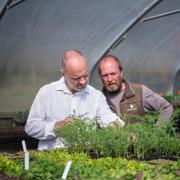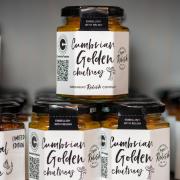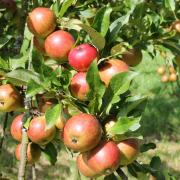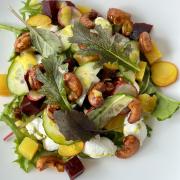It is remarkable that the world's best single malt whisky, as chosen by judges in the 2022 World Whiskies Award, came from Cumbria. That particular drink sold out some time ago but others in its lineage have gone on to win plaudits too.
When you visit Lakes Distillery, however, what strikes you as even more remarkable is how the place was created in the first place, transformed from a derelict farm into an internationally recognised whisky and gin making centre.
The chance to learn more of how it came about, why this location was chosen and the distillery’s place in its landscape comes on a Taste of Gin Experience. It is about gin, naturally, and there is a generous and sociable tasting at the end. But you do come away with the bigger picture too.
For example, did you know the distillery quatrefoil logo comes from decorative elements in the original stone walls of the grade II listed former model farm. The quatrefoil is regarded as a symbol of good luck and harmony and now appears on every box and bottle that leave the distillery.
Having arrived early to enjoy a coffee in the bistro, I am ready to hear more from guide Zane Geddal about how the 1860s dairy farm close to the river Derwent was bought by Paul Currie in 2013. With Nigel Mills and investors, £11 million was invested to transform the buildings – then run-down and still with straw strewn cattle stalls, but sound and perfectly laid out – into a state-of-the-art distillery and visitor centre, bistro and shop.
To get an even better sense of place, next stop is the River Room where our group sits on a quatrefoil shaped sofa around a 3D model of the Derwent’s course.
Zane offers a brief history of gin’s Dutch origins and its introduction to Britain by King William of Orange as a cheaper alternative to beer and heavily taxed wines and cognac. Abuse of the new spirit and related crime, however, led to the 1751 Gin Act that imposed tax and restictions triggering an underground movement of moonshine and bathtub gin.

We end with a film of the majestic Derwent as it tumbles from its source under Scafell Pike and begins its swift, 25-mile journey down to Derwentwater and onto Bassenthwaite Lake, passing within 200 yards of the distillery before continuing to the coast at Workington. It is a beautiful film and gives not only a sense of geography but also of scale.
We then move out to a mezzanine level in the still room to see the copper gin still that produces around 200,000 litres a year and learn more about production: how the still is heated from beneath and how the installation of a biomass boiler, solar panels and wool insulation, together with heat and water recycling, minimise energy use at the site.
The tour ends in the tasting room which is already laid out with glasses, ice, garnishes and Fevertree Mediterranean tonic. Zane brings the original Lakes Gin and Pink Grapefruit Gin to try and offers a choice of the Elderflower and Rhubarb and Rosehip liqueur gins. As I’m driving I have only a sip, my favourite being the refreshing Pink Grapefruit served with a garnish of peel. Drivers who are unable to partake on the day are given a sample bottle to enjoy later.
Among the other guests on the tour are a couple from Australia who are on a road trip; a family from Dorset whose daughter is at Leeds University; a young couple from Wales on a Lakes weekend; and a couple from Lincolnshire whose hotel, Appleby Manor, offers the distillery tour as part of a package.
We all end the 45-minute tour in the shop to spend our complimentary voucher. With a bottle of Pink Grapefruit duly purchased, I head back up the steps to the car park, looking back and admiring all that’s been achieved.
A Taste of Gin Experience at Lakes Distillery is £20 per person. lakesdistillery.com







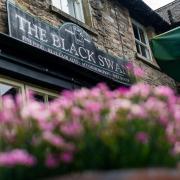

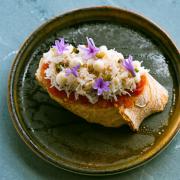

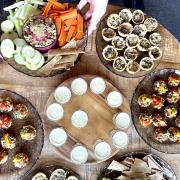
![Peter compering in the Cumbria Life Food Theatre at the Westmorland County Show [Sheenah Alcock]](/resources/images/128x89/1x/18467179.jpg)
![Peter compering in the Cumbria Life Food Theatre at the Westmorland County Show [Sheenah Alcock]](/resources/images/180x180/1x/18467179.jpg)



